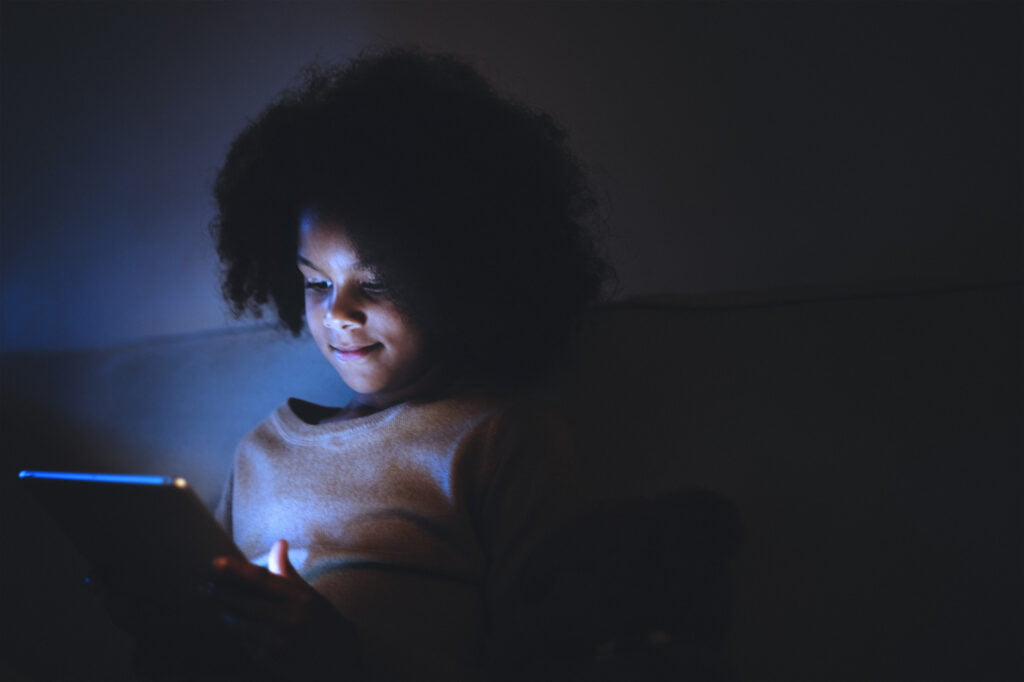How Light And Darkness Affect Sleep

Most people are familiar with the term nocturnal, which means “done, occurring, or active at night”. Animals that sleep during the day and do most of their activities at night are nocturnal. Examples are bats, owls, and raccoons. As humans we are the opposite, we are diurnal, which means “active in the daytime”. We are busy with our activities during the day and get our much-needed rest after the sun goes down. Surprisingly, we happen to be in the minority as approximately 80% of mammals evolved to sleep during the day. The reason we evolved this way is a bit of a mystery, and although many claim to be “night owls”, biologically we are built to do our modern version of hunting and gathering in the daylight. Our eyes don’t adapt well to darkness, we don’t have the echolocation skills of a bat, and we rely on the sun for Vitamin D.
As humans, we function during the daytime and part of that functionality is based on the circadian rhythm. Circadian rhythms are physical, mental, and behavioral changes that follow a 24-hour cycle. Examples are the sleep-wake cycle, the body temperature cycle, and the cycle of hormone secretion. We are most familiar with the sleep-wake cycle as it pertains to circadian rhythm. Like the moving parts of a clock, the circadian rhythm also consists of moving parts. These moving parts are stimuli and hormones. Melatonin and cortisol are two key hormones that regulate circadian rhythm and the sleep-wake cycle.
Melatonin is a hormone produced by the pineal gland, a tiny gland in your brain that is part of the endocrine system. It is involved in several physiological functions, but it’s best known for its impact on sleep. Your pineal gland receives information about the day-night cycle from the retinas in your eyes prompting melatonin secretion. Melatonin secretion is highest during darkness and lowest during daylight. So, as the sun sets and our eyes take in less light, the brain releases melatonin. This signals our muscles to relax, slows our thinking, and allows us to drift off to sleep. In the morning, the blue light from the sun permeates our closed eyes and signals the brain that it’s time to get moving again!
As our brain shifts from night to day, our adrenal gland comes into play and secretes cortisol. Many of you may be familiar with cortisol as a stress hormone. Although it has been pinned as a negative, cortisol is actually a very important hormone. It regulates metabolism, blood pressure, blood sugar, decreases inflammation, and regulates the body’s stress response. There are many benefits to cortisol, one essential benefit being keeping us awake and alert during the day!
Now that we understand how melatonin and cortisol work in our body. Let’s talk about light and dark. When the light bulb was invented, we were able to artificially illuminate our surroundings. Light bulbs, TVs, LEDs, computer monitors, iPads, and smartphones flood our eyes with light. They emit blue light at all hours and often during a time when we would’ve previously been surrounded by darkness. Unfortunately, these lights tell the brain that it’s still daytime which inhibits melatonin secretion and makes falling asleep more difficult.
You may now ask, how can we use this information to improve sleep for ourselves and our children? Fortunately, I have some tips! Although it is nearly impossible to rid our environment of all sources of light, we can reduce light exposure with small changes. A few hours before bed turn off the intense sources of blue light like the TV and smartphone. Also, make sure the sleeping room is as dark as possible, like can’t see your hand in front of your face dark! Blackout blinds can achieve this, particularly when we are in the long days of summer. Lastly, fifteen minutes of morning sunlight will help regulate melatonin production.
I find the complexity of the human body fascinating. There are so many things happening simultaneously that we don’t often think about. By now, you have a clear understanding of the sleep-wake cycle as a type of circadian rhythm and the impact that light and dark has on the sleep-wake cycle. The timing and amount of light exposure helps keeps us relaxed and peaceful for sleep, and energetic and enthusiastic for our daytime activities. Take this knowledge and work with your body instead of against it, and I guarantee that you’ll start seeing and feeling results quickly!